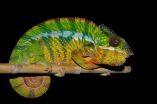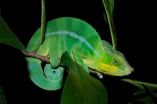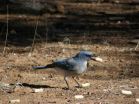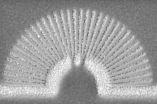Biodiversity: 11 new species come to light in Madagascar
The fantastic palette of the panther chameleon underscores nature's richness
2015-05-25
(Press-News.org) Madagascar is home to extraordinary biodiversity, but in the past few decades, the island's forests and associated biodiversity have been under greater attack than ever. Rapid deforestation is affecting the biotopes of hundreds of species, including the panther chameleon, a species with spectacular intra-specific colour variation. A new study by Michel Milinkovitch, professor of genetics, evolution, and biophysics at the University of Geneva (UNIGE), led in close collaboration with colleagues in Madagascar, reveals that this charismatic reptilian species, which is only found in Madagascar, is actually composed of eleven different species. The results of their research appear in the latest issue of the Molecular Ecology journal. They also discuss the urgent need to protect Madagascar's habitats.
In collaboration with professor Achille Raselimanana of the University of Antananarivo, researchers from the Department of Genetics and Evolution in the UNIGE Faculty of Sciences, led by Michel Milinkovitch, sought to find the genetic keys behind panther chameleon's incredible colour palette. Their analyses, performed on site in Madagascar, reveal the presence of 11 rather than a single species.
A Talkative Drop of Blood
It took two expeditions led from East to West for the scientists to collect a drop of blood from each of 324 individuals and document them through colour photographs. The DNA (mitochondrial and nuclear) of each of the specimens were sequenced and analysed in the laboratory according to the hypothesis that a chameleon's dominant colour might be related to the geographic zone where it is found. Most importantly, the genetic material indicated strong genetic structure among geographically-restricted lineages, revealing very low interbreeding among populations.
A Key for Turning Genetics into Color
The mathematical analyses of the 324 colour photographs demonstrated that subtle colour patterns could efficiently predict assignment of chameleon individuals to their corresponding genetic lineage, confirming that many of the geographical populations might need to be considered separated species. The scientists then simplified their analyses of the colour diversity into a classification key, which allows to link most chameleons to their corresponding species using only the naked eye. This case of hidden speciation confirms a major characteristic of Madagascar: it is amongst the most diverse places for life on Earth; a biodiversity hotspot.
Madagascar, Unique but Precarious Conservatory
Each of the new chameleon species requires individual management, given that they each constitute a different part of the biodiversity of the whole. The visual classification key devised by the researchers could assist local biologists and trade managers to avoid local population over-harvesting. The task of biodiversity management is daunting because of the widespread destruction of the forest habitat for agricultural practices as well as for firewood and charcoal production by populations with very low living standards. These human activities threaten the survival of 400 species of reptile, 300 species of amphibians, 300 species of birds, 15,000 species of plants and countless species of invertebrates. In addition, approximately 80 to 90% of all living species found in Madagascar are endemic, meaning they exist nowhere else on earth.
Given the charismatic nature of chameleons, Milinkovitch hopes that, beside a better understanding of the genetic basis of colour variation in chameleons, his collaborative study with his Malagasy colleagues will help his colleague, Professor Raselimanana, to continue his difficult enterprise: raising awareness for the staggering but fragile biodiversity hosted by Madagascar.
INFORMATION:
[Attachments] See images for this press release:


ELSE PRESS RELEASES FROM THIS DATE:
2015-05-25
This news release is available in French. Certain blind individuals have the ability to use echoes from tongue or finger clicks to recognize objects in the distance, and some use echolocation as a replacement for vision. Research done by Dr. Mel Goodale, from the University of Western Ontario, in Canada, and colleagues around the world, is showing that echolocation in blind individuals is a full form of sensory substitution, and that blind echolocation experts recruit regions of the brain normally associated with visual perception when making echo-based assessments ...
2015-05-24
Seville, Spain - 24 May 2015: Cognitive impairment predicts worse outcome in elderly heart failure patients, reveals research presented today at Heart Failure 2015 by Hiroshi Saito, a physiotherapist at Kameda Medical Centre in Kamogawa, Japan. Patients with cognitive impairment had a 7.5 times greater risk of call cause death and heart failure readmission.
Heart failure patients with cognitive impairment may get progressively worse at adhering to medications, leading to poorer prognosis.
Heart Failure 2015 is the main annual meeting of the Heart Failure Association ...
2015-05-23
SAN DIEGO - Results from a new nationwide survey announced today indicate a steady increase in the number of pediatric patients who are being treated with proton radiation therapy for cancerous and non-cancerous tumors.
The research, led by Andrew L. Chang, M.D., medical director of pediatrics with the Scripps Proton Therapy Center, was presented during the 54th annual Particle Therapy Co-Operative Group (PTCOG) Conference in San Diego, which runs through May 23.
Based on a survey of all proton therapy centers in the United States, the number of pediatric patients treated ...
2015-05-23
Seville, Spain - 23 May 2015: Moderate to severe depression is associated with a 5-fold increased risk of all cause mortality in patients with heart failure, according to research presented today at Heart Failure 2015. The results from OPERA-HF show that risk was independent of comorbidities and severity of heart failure. Patients who were not depressed had an 80% lower mortality risk.
Heart Failure 2015 is the main annual meeting of the Heart Failure Association (HFA) of the European Society of Cardiology (ESC) and takes place 23 to 26 May in Seville, Spain. The scientific ...
2015-05-22
Many animals feed on seeds, acorns or nuts. The common feature of these are that they have shells and there is no direct way to know what's inside. How do the animals know how much and what quality of food is hidden inside? A simple solution would be to break the shells, which often takes time and effort -- it would be a big disappointment to know that it's rotten or bad after the hard effort of opening the nuts!
Can animals evaluate the food hidden inside the nuts? This is especially important for some animals who cache the food items for later use without opening and ...
2015-05-22
As a result of research performed by scientists at the University of Maryland School of Medicine (UM SOM), the U.S. Food and Drug Administration has approved the use of a drug to treat the deleterious effects of radiation exposure following a nuclear incident. The drug, Neupogen®, is the first ever approved for the treatment of acute radiation injury.
The research was done by Thomas J. MacVittie, PhD, professor, and Ann M. Farese, MA, MS, assistant professor, both in the University of Maryland School of Medicine (UM SOM) Department of Radiation Oncology's Division ...
2015-05-22
MANHATTAN , Kansas -- A recent study with Kansas State University researchers details vaccine development for two new strains of avian influenza that can be transmitted from poultry to humans. The strains have led to the culling of millions of commercial chickens and turkeys as well as the death of hundreds of people.
The new vaccine development method is expected to help researchers make vaccines for emerging strains of avian influenza more quickly. This could reduce the number and intensity of large-scale outbreaks at poultry farms as well as curb human transmission.
It ...
2015-05-22
New research by scientists at the University of Maryland School of Medicine has found that esophageal cancer patients treated with proton therapy experienced significantly less toxic side effects than patients treated with older radiation therapies.
Working with colleagues at the Mayo Clinic in Rochester, Minnesota and the MD Anderson Cancer Center in Dallas, Texas, Michael Chuong, MD, an assistant professor of radiation oncology at the school, compared two kinds of X-ray radiation with proton therapy, an innovative, precise approach that targets tumors while minimizing ...
2015-05-22
May 22, 2015 - Boston, MA - Few professions in the world benefit from the sharing of information as much as meteorology. Nearly all countries around the world realize the value of sharing meteorological data across their borders. This information collaboration is vital to scientific understanding of the atmosphere and the oceans, as well as essential for accurate forecasts and timely warnings of hurricanes, typhoons, and other severe weather.
But what about when one country maintains an active embargo with another country?
That question was answered last year, when ...
2015-05-22
BUFFALO, N.Y. -- It looks like a Slinky suspended in motion.
Yet this photonics advancement -- called a metamaterial hyperlens -- doesn't climb down stairs.
Instead, it improves our ability to see tiny objects.
Described in a research paper published today by the journal Nature Communications, the hyperlens may someday help detect some of the most lethal forms of cancer.
It could also lead to advancements in nanoelectronic manufacturing and boost scientists' ability to examine single molecules -- a development with implications in physics, chemistry, biology and other ...
LAST 30 PRESS RELEASES:
[Press-News.org] Biodiversity: 11 new species come to light in Madagascar
The fantastic palette of the panther chameleon underscores nature's richness



